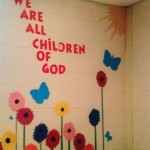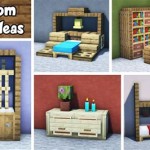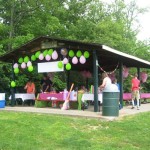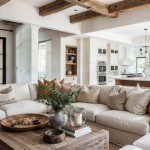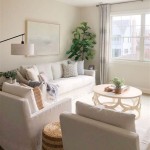DIY Room Decor Ideas With Cardboard
Cardboard, often discarded as packaging material, possesses remarkable potential for creative repurposing. Its structural integrity, versatility, and accessibility make it an ideal medium for various do-it-yourself (DIY) room decor projects. Transforming this readily available material into stylish and functional decor items offers a cost-effective and environmentally conscious approach to interior design.
One of the simplest yet impactful cardboard creations is wall art. Cutting cardboard into desired shapes, such as geometric patterns, silhouettes, or letters, allows for personalized wall decor. These cutouts can be painted, covered with fabric, or decorated with other materials like paper or string to match existing room aesthetics. Layering multiple cardboard cutouts creates a three-dimensional effect, adding depth and visual interest to walls.
Functional storage solutions also benefit from cardboard's versatility. Sturdy cardboard boxes can be repurposed into stylish storage containers. Covering them with decorative paper, fabric, or paint transforms them into attractive organizers for shelves, closets, or desks. Dividers made from cardboard can further enhance organization within these boxes, creating compartments for smaller items.
Lighting fixtures can also be crafted from cardboard. Cutting and shaping cardboard into intricate designs and incorporating a light source within creates unique and visually appealing lamps or pendant lights. The cardboard can be left in its natural state for a rustic look or painted and embellished for a more polished finish. It is important to ensure safe wiring practices and use low-heat LED bulbs to prevent fire hazards.
Cardboard furniture presents a more ambitious yet rewarding DIY endeavor. Stacking and securing multiple layers of cardboard allows for the creation of sturdy shelves, tables, or even chairs. Careful planning and precise cutting are essential for structural integrity. The finished pieces can be painted, stained, or covered with fabric for a more refined appearance.
For those seeking decorative accents, cardboard can be transformed into a variety of embellishments. Cutting and shaping cardboard into intricate floral designs creates unique wall art or decorative accents for picture frames or mirrors. These cardboard flowers can be painted, glittered, or left in their natural state for a rustic aesthetic.
Creating decorative bowls or trays from rolled and glued cardboard strips offers another avenue for creative expression. These pieces can be used to hold small items like keys or jewelry or serve as decorative centerpieces. Painting or covering them with decorative paper enhances their visual appeal.
Headboards for beds can also be crafted from cardboard. Cutting a large piece of cardboard into the desired shape and covering it with fabric, padding, or paint creates a personalized and cost-effective headboard. Adding decorative elements like buttons or nailheads further enhances the design.
Children's rooms particularly benefit from cardboard's creative potential. Building playhouses, castles, or even cars from large cardboard boxes provides children with hours of imaginative play. Decorating these structures with paint, markers, or other craft supplies further personalizes the experience.
Beyond these ideas, the possibilities for cardboard room decor are virtually limitless. Its adaptability allows for customization and experimentation, enabling individuals to create unique and personalized decor items tailored to their specific tastes and needs. Furthermore, repurposing cardboard contributes to sustainability by reducing waste and promoting environmentally conscious design practices.
Working with cardboard requires a few essential tools. A sharp utility knife or craft knife is crucial for precise cutting. A metal ruler or straight edge ensures clean, straight lines. Strong adhesive, such as hot glue or craft glue, is necessary for joining cardboard pieces. Additionally, paint, fabric, decorative paper, and other embellishments allow for customization and personalization of finished projects.
Before starting any cardboard project, it is essential to prepare the material. Flattening any curved or bent sections ensures a smooth surface for cutting and decorating. Cleaning the cardboard removes any dust or debris. Measuring and marking the cardboard accurately is crucial for achieving desired shapes and sizes.
Safety precautions should always be observed when working with cardboard and cutting tools. Using a cutting mat protects surfaces from damage. Wearing safety gloves prevents cuts and ensures secure handling of materials. Proper ventilation is important when using paints, adhesives, or other potentially hazardous materials.
Repurposing cardboard for DIY room decor offers a cost-effective, environmentally friendly, and creatively stimulating way to personalize living spaces. Its versatility and accessibility make it an ideal medium for individuals of all skill levels to explore their creativity and transform ordinary cardboard into extraordinary decor elements.

Diy Ideas 10 Clever Ways To Use Cardboard In Your Decor Crafts Design

Diy Room Decor Best Out Of Waste Home Cardboard Crafts

25 Unbelievable Ways To Use Cardboard For Home Decor Diy Wall Bedroom Dorm

2 Easy Home Decor Ideas Diy Wall Hanging Cardboard Craft Room D Decorations Crafts

Mind Blowing Ideas With Cardboard For Home Décor Life

5 Easy Paper Room Decor Ideas Diy Best Out Of Waste Wall Decoration

15 Creative And Cool Cardboard Crafts Design Improvised

Top Paper Craft Ideas For Wall Decoration

50 Fun And Easy Diy Room Decor Ideas That Won T Break The Bank

25 Cool No Money Decorating Projects That Will Beautify Your Decor Through Wall Art Diy Room Home
Related Posts
